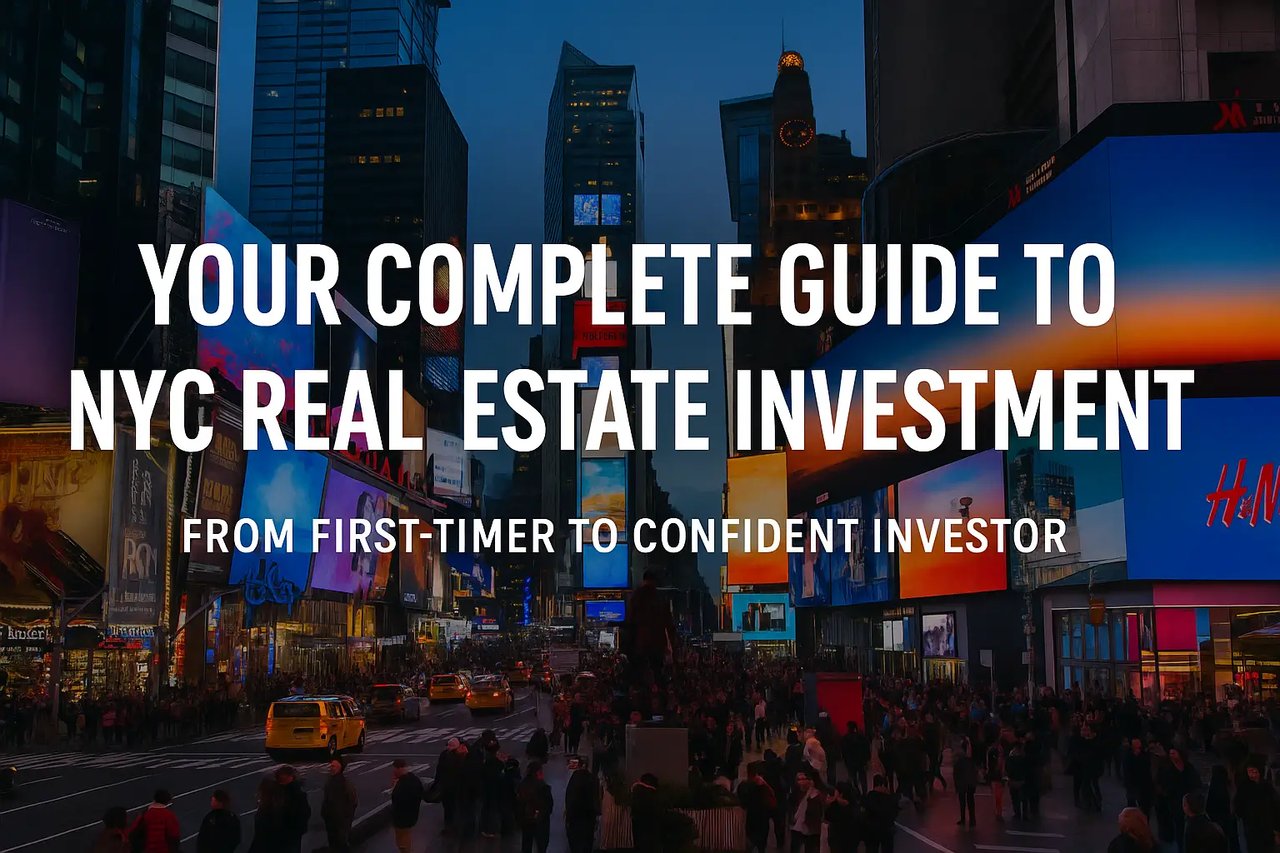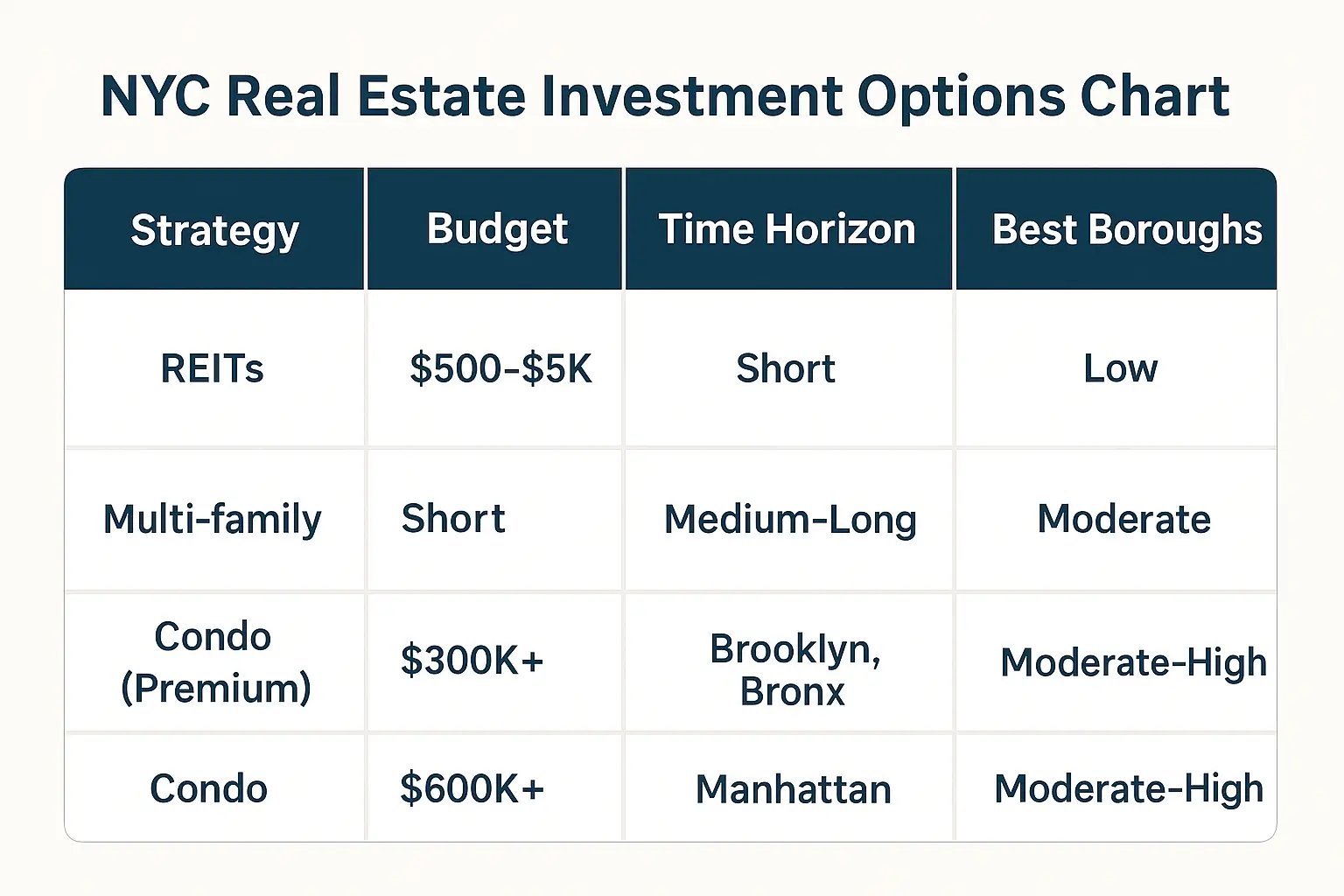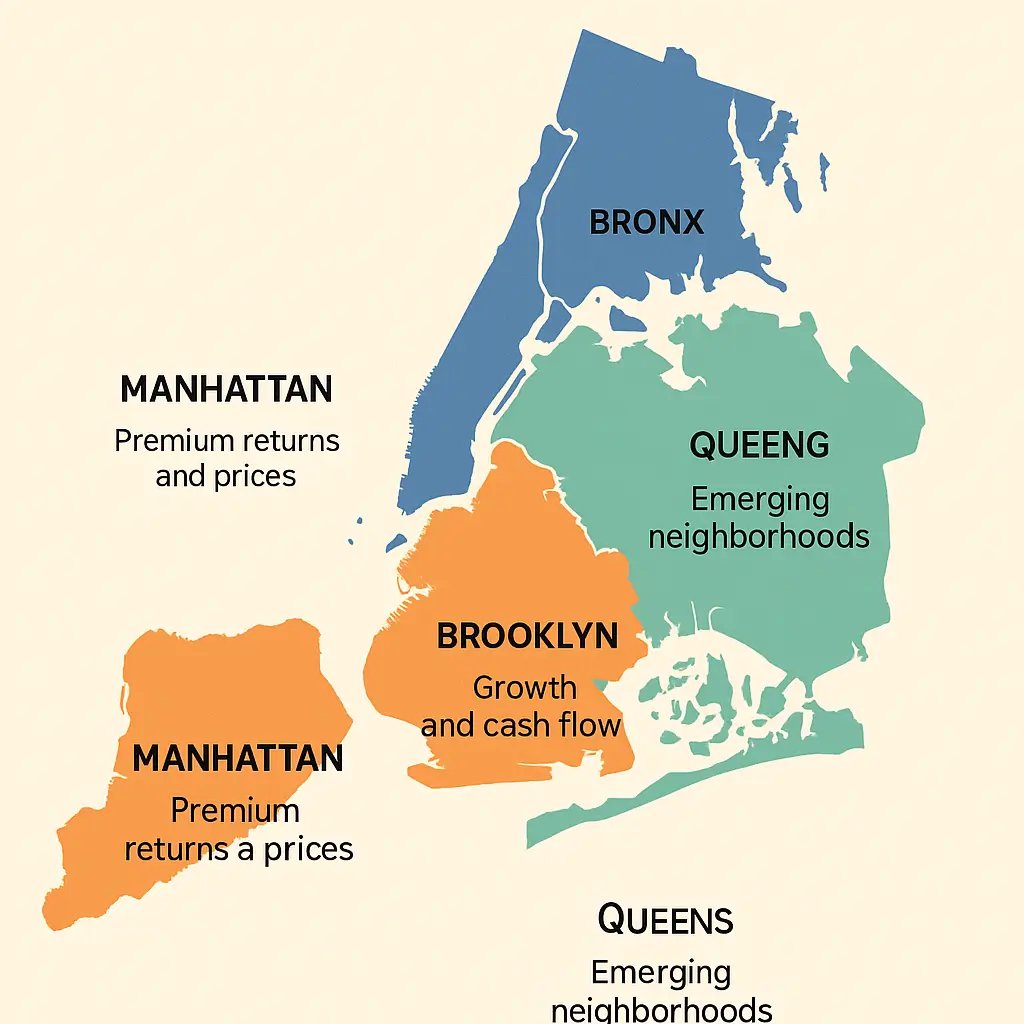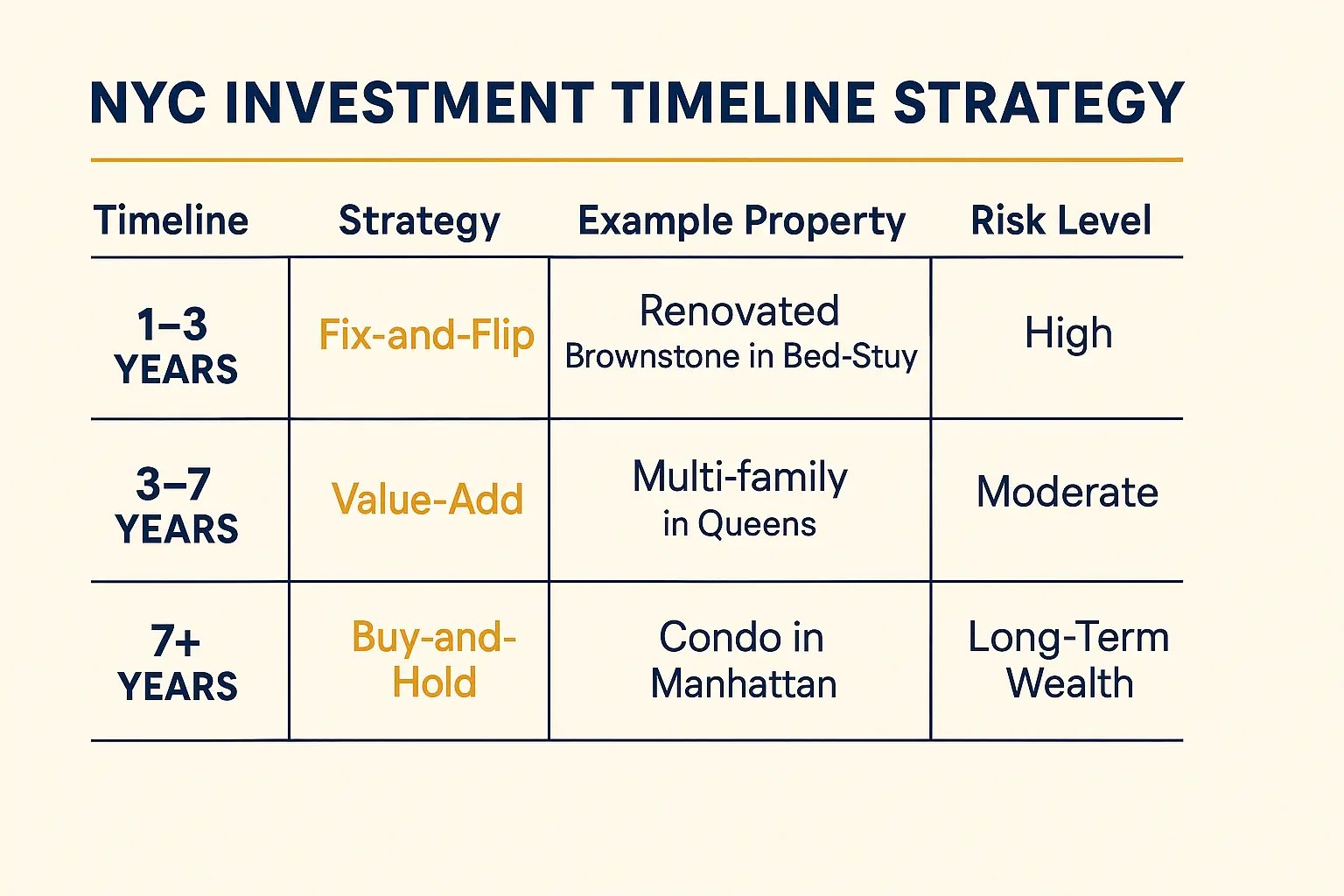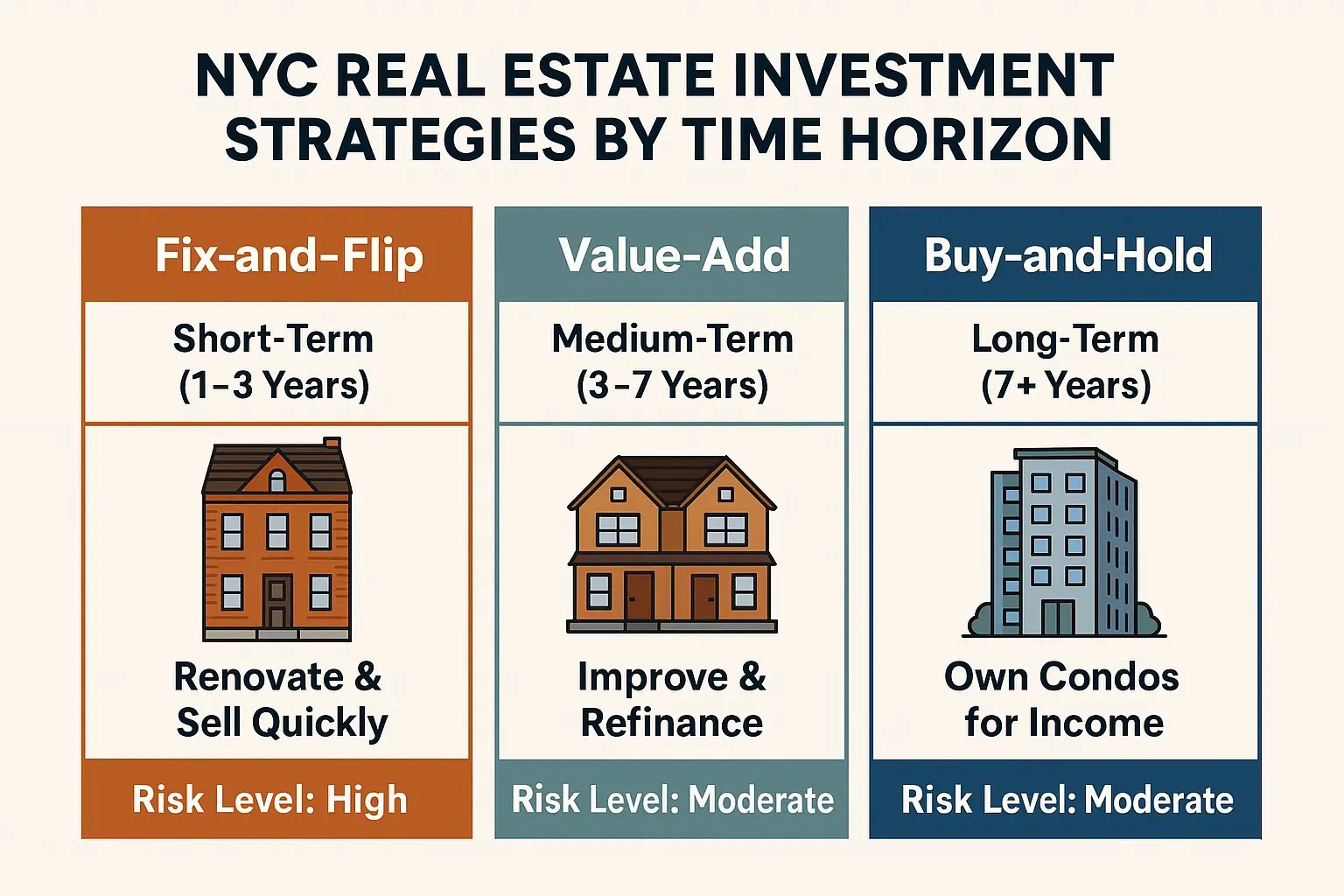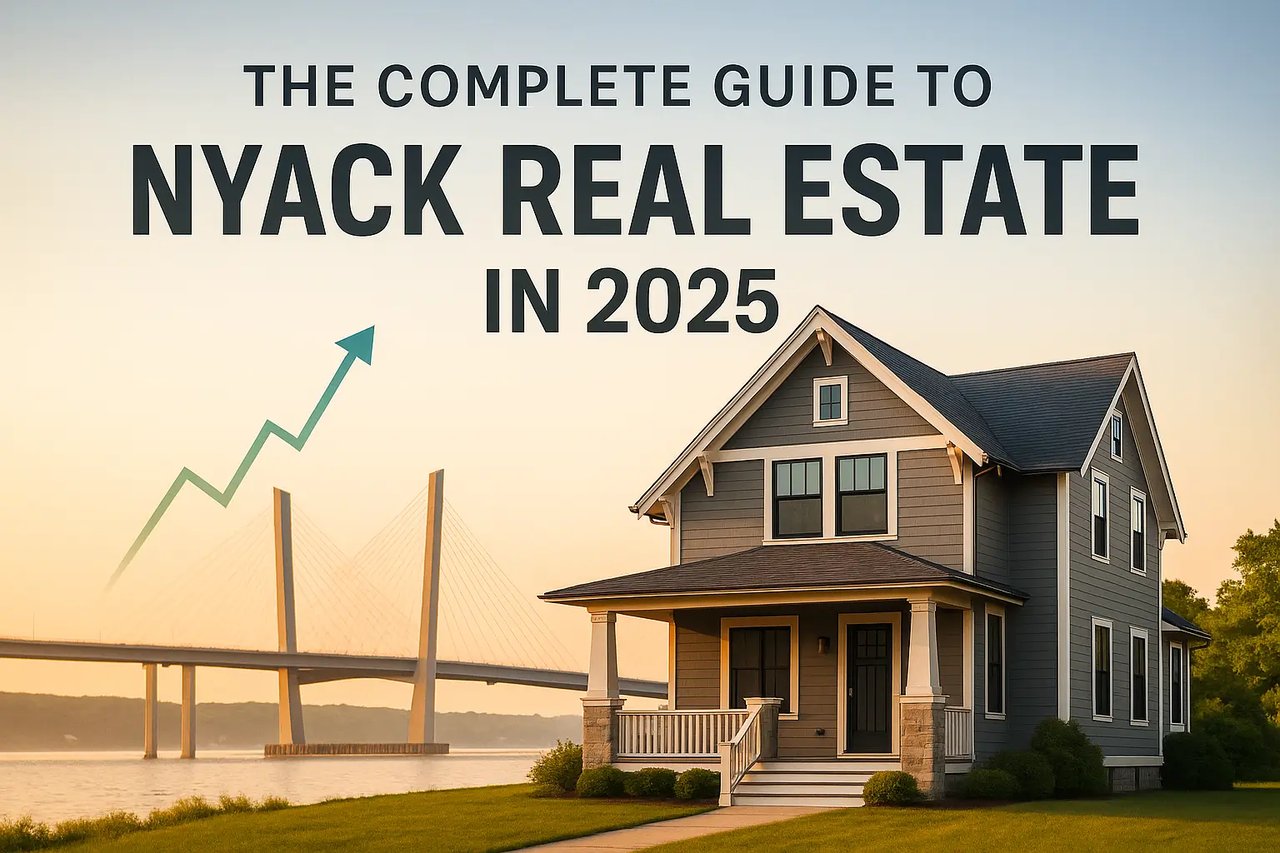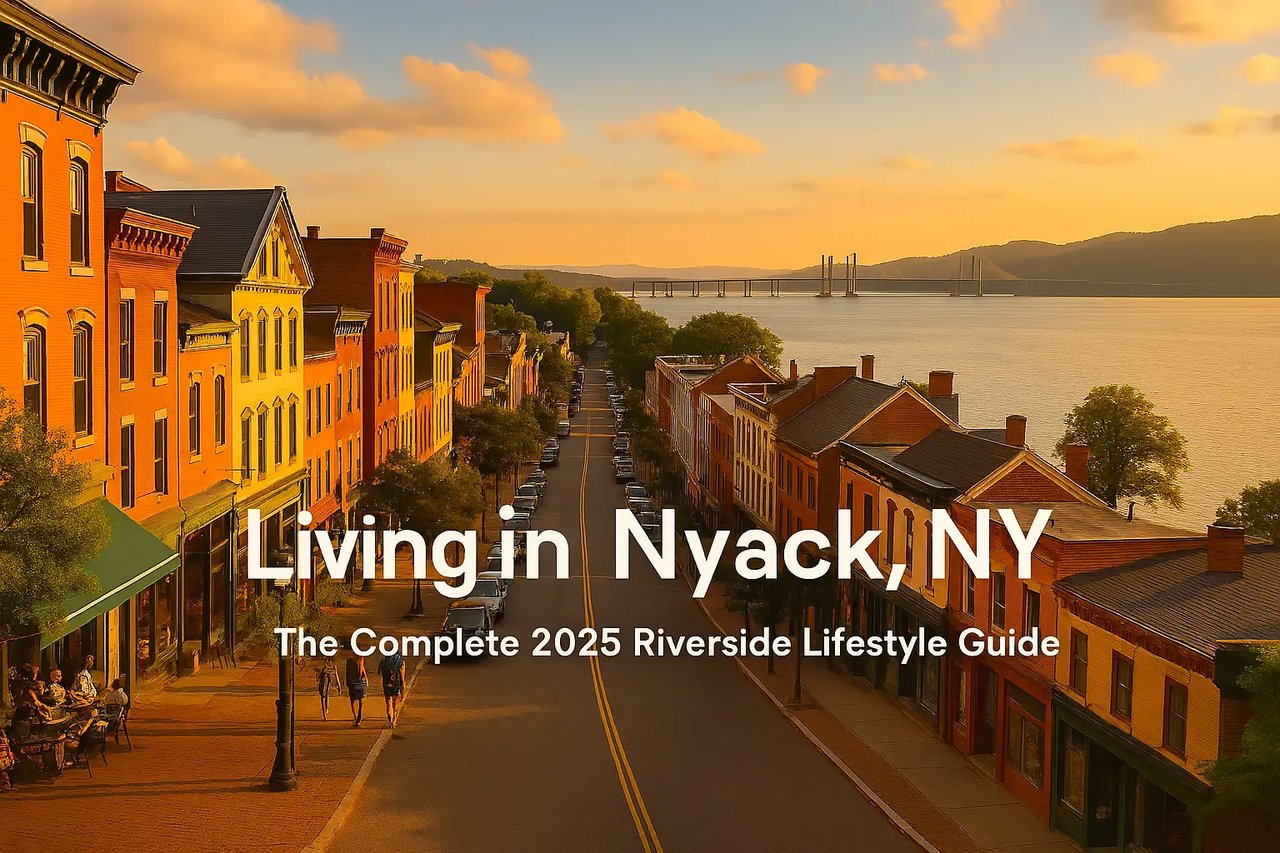I'll never forget the moment Sarah, a 28-year-old teacher from Connecticut, called me with excitement in her voice. She had just closed on her first NYC investment property - a small two-family in Astoria, Queens. "I can't believe I actually did it," she said. "Six months ago, I thought NYC real estate was only for millionaires."
Sarah's story isn't unique. Every week, I work with regular people - teachers, nurses, engineers, small business owners - who successfully break into NYC's real estate market. Yes, it requires strategy, patience, and capital, but the opportunities are real and substantial for those willing to do their homework.
After spending over a decade helping investors navigate NYC's complex real estate landscape, I've seen complete beginners transform their financial futures through strategic property investments. Yes, it requires capital, patience, and education, but the opportunities are real and substantial.
Let me walk you through everything you need to know to get started, avoid costly mistakes, and build a profitable NYC real estate portfolio.
Why NYC Real Estate Still Makes Sense in 2025
The Numbers Don't Lie
New York City isn't just America's largest city with 8.3 million residents; it's an economic powerhouse that generates the highest GDP in the nation. When you invest in NYC real estate, you're buying into a market with fundamentals that most cities can only dream of.
Consider these compelling statistics:
- Vacancy rates hover around 1.4%, significantly below national averages
- Home prices increased 6.0% year-over-year as of May 2025
- The median home price reached $590,400 across all boroughs
- Commercial real estate transactions are expected to hit $47 billion by 2025
📊 Data Snapshot: According to REBNY, outer boroughs saw a 9% year-over-year increase in small multifamily purchases in Q1 2025, with first-time investors representing 34% of all buyers.
But here's what these numbers really mean for you as an investor: consistent demand, limited supply, and ongoing appreciation potential.
Real Success Story: Priya from New Jersey bought a 2-family brick house in Woodside, Queens for $850,000 in early 2024. After renovating the basement into a legal third unit for $35,000, she now generates $2,400/month in net cash flow while building equity in a rapidly appreciating neighborhood.
The Post-Pandemic Recovery Story
Many investors worried that remote work would kill NYC real estate. Instead, we've witnessed remarkable resilience. High-income earners are returning to the city in droves, wage growth has accelerated, and the market has adapted to new realities while maintaining its fundamental strength.
Manhattan's median asking prices dropped 6.3% to $1.55 million, creating opportunities for savvy investors. Meanwhile, Brooklyn climbed 4.8% to approximately $1.1 million, and Queens jumped an impressive 12% to $700,000. These shifts represent opportunity, not weakness.
🧠 Expert Insight: "Manhattan's price dips in 2024-25 have created rare entry points for long-term appreciation plays, especially in Midtown East and Upper West Side. We're seeing sophisticated investors with 7-10 year horizons making strategic acquisitions at prices we haven't seen since 2019." - Maria Rodriguez, Senior VP at Marcus & Millichap
Understanding Your Investment Options: A Beginner's Breakdown
Residential Properties: Your Foundation Options
Condominiums: The Straightforward Choice When you buy a condo, you own your unit outright. You can rent it, sell it, or live in it without asking anyone's permission. It's the closest thing to traditional homeownership in NYC's unique market.
Cooperatives (Co-ops): The NYC Special Co-ops are uniquely New York. You're buying shares in a corporation that owns the building, not the actual apartment. The building's board must approve any sale or rental, which can be restrictive but also helps maintain property values and community standards.
Multi-Family Properties: The Cash Flow Champions These are particularly attractive in Brooklyn and Queens. Instead of relying on one tenant, you have multiple units generating income. If one tenant moves out, you still have income from the others.
Single-Family Homes: The Outer Borough Opportunity Predominantly found in Queens, Brooklyn, and the Bronx, these properties offer appreciation potential and the ability to control your entire investment without dealing with other unit owners.
Commercial Properties: The Advanced Play
Once you've mastered residential investing, commercial properties offer different advantages:
- Office buildings benefit from NYC's status as a global business center
- Retail spaces in strategic locations can provide both rental income and profit participation
- Mixed-use properties combine residential and commercial elements for diversified income streams
Borough-by-Borough Investment Strategy
Manhattan: Premium Returns, Premium Prices
Manhattan remains the gold standard for NYC real estate investment. Yes, entry costs are higher, but rental rates and long-term appreciation potential are typically superior. The Upper East Side saw median condo prices reach $1.5 million in Q1 2024, with strong rental demand from high-income professionals who value proximity to work and amenities.
Best for: Investors with substantial capital seeking premium returns and prestige properties.
Brooklyn and Queens: The Growth Story
These outer boroughs represent some of the most compelling opportunities for new investors. Over the past two decades, neighborhoods like Bushwick, Bed-Stuy, Long Island City, and Astoria have transformed dramatically.
Why this matters: You can often find multi-family properties at more accessible price points while benefiting from ongoing gentrification and infrastructure improvements.
Best for: Investors seeking cash flow from multi-family properties and long-term appreciation in emerging neighborhoods.
Real Success Story: Mark Thompson, a 32-year-old software engineer from New Jersey, used the BRRRR method (Buy, Rehabilitate, Rent, Refinance, Repeat) starting with a Crown Heights triplex in 2022. By strategically renovating and refinancing, he recycled his initial $120,000 investment three times and now owns 5 doors generating $8,200/month in total rental income.
The Bronx: The Emerging Opportunity
Often overlooked, the Bronx offers some of the best risk-adjusted returns in NYC. Improving transportation infrastructure and ongoing development projects are creating new opportunities for forward-thinking investors.
Best for: Experienced investors comfortable with emerging markets and longer-term appreciation plays.
Your Investment Strategy: Defining Your Approach
Income vs. Appreciation: What's Your Priority?
The Rental Income Strategy Focus on properties that generate strong monthly cash flow. Multi-family properties in outer boroughs often provide the best income-to-price ratios. Your goal is to cover expenses and generate positive monthly cash flow from day one.
The Appreciation Strategy Target emerging neighborhoods with growth potential. You might accept lower initial returns in exchange for significant long-term value increases. This approach requires more patience but can generate substantial wealth over time.
The Balanced Approach Combine steady income with moderate appreciation expectations. This strategy often works best for beginners because it provides income while building long-term wealth.
Timeline Considerations That Matter
Short-term (1-3 years): The Fix-and-Flip Approach This involves purchasing properties in transitional neighborhoods, making strategic improvements, and selling for a profit. It requires more active management but can generate quicker returns.
Medium-term (3-7 years): The Value-Add Strategy Focus on properties requiring moderate improvements with solid appreciation potential. This sweet spot often provides the best balance of risk and reward for beginners.
Long-term (7+ years): The Buy-and-Hold Strategy Emphasize steady income generation and significant appreciation in established areas. This approach requires the least active management and often produces the most reliable returns.
Alternative Investment Approaches for Smaller Budgets
Don't have $200,000+ for a down payment? You still have options to gain NYC real estate exposure:
Real Estate Investment Trusts (REITs)
Companies like Vornado, SL Green Realty, and Empire State Realty Trust offer NYC-focused portfolios. You can start with just a few hundred dollars and benefit from professional management and diversification.
Real Estate Crowdfunding
Platforms allow you to pool funds with other investors for larger projects. Minimum investments typically range from $1,000 to $5,000, making NYC real estate accessible to smaller investors.
Turnkey Properties
Some companies specialize in offering properties ready for immediate rental. While you pay a premium, you get a property that's already generating income with professional management in place.
Financing Your NYC Investment: The Complete Guide
Traditional Financing: Your Foundation Options
Conventional Mortgages These require 20-25% down payments for investment properties, good credit scores (typically 680+), and debt-to-income ratios below 43%. They offer competitive interest rates for qualified borrowers with strong financial profiles.
FHA Loans These provide lower down payments (as low as 3.5%) with more flexible credit requirements, but require owner occupancy initially. This option works well for beginners planning to house-hack their first investment.
Specialized Investment Financing
Hard Money Loans Short-term, asset-based financing with higher interest rates but faster approval processes. These loans typically range from 6-24 months and provide bridge funding before refinancing into traditional mortgages.
Portfolio Lenders Relationship-based lenders offering flexibility for multi-family properties and experienced investors. Companies like Renovo Financial specialize in NYC real estate with local expertise and various loan products.
Navigating NYC's Complex Legal Landscape
Tax Considerations You Can't Ignore
NYC real estate investors face multiple tax obligations that significantly impact returns. Understanding these upfront can save you thousands:
Property Taxes: Your largest ongoing expense, determined by assessed value and varying by borough and property type.
Transfer Taxes: NYC imposes city transfer taxes ranging from 1% to 2.625% depending on sale price, plus New York State transfer taxes of 0.4% to 0.65%.
Mortgage Recording Tax: Ranges from 0.8% to 2.8% of the mortgage amount and is usually the borrower's responsibility.
Capital Gains Considerations: Investment property sales generate capital gains subject to federal and state taxes. However, 1031 exchanges can defer these taxes when reinvesting proceeds in similar properties.
Landlord-Tenant Law Compliance
New York's landlord-tenant laws provide extensive tenant protections. Key requirements include:
Security Deposits: Limited to one month's rent for non-regulated units, with mandatory interest-bearing accounts for buildings with six or more units.
Habitability Standards: You must maintain safe, habitable premises with proper heating, plumbing, electricity, and structural safety.
Entry and Access Rights: You must provide 24-hour notice before entering rental units except in emergencies.
Risk Management: Protecting Your Investment
Major Risks Every Investor Must Consider
High Entry Costs NYC's expensive real estate requires substantial capital. Closing costs can reach 4-6% of purchase price for buyers, with even higher costs for investors.
Market Volatility Despite long-term strength, NYC real estate experiences cyclical fluctuations. The market saw downturns from 2017-2019 and during COVID-2020.
Regulatory Challenges NYC's complex legal and regulatory environment includes rent stabilization laws, lead paint disclosure requirements, and frequent policy changes.
Common Beginner Mistakes (And How to Avoid Them)
Insufficient Market Research Many new investors fail to understand local market trends, property values, and neighborhood dynamics. Success requires deep knowledge of specific areas and even block-by-block variations.
Overlooking Professional Help Attempting to handle legal, financial, and logistical considerations without expert help leads to costly mistakes. Essential professionals include real estate agents, attorneys, accountants, and property inspectors.
Inadequate Due Diligence Comprehensive property evaluation must include financial analysis, physical inspections, market comparisons, and legal reviews.
Property Management: Your Ongoing Success Strategy
Management Strategy Options
Self-Management Feasible for small properties if you live nearby, but requires significant time investment and local law knowledge. This approach maximizes cash flow but demands hands-on involvement.
Professional Management Companies typically charge 4-10% of rental income but provide comprehensive services including tenant screening, rent collection, maintenance coordination, and legal compliance.
Hybrid Approach Handle selected aspects personally while outsourcing complex tasks like legal compliance, major repairs, or tenant screening.
Building and Scaling Your Portfolio
Growth Strategies for Long-Term Success
The BRRRR Method Buy, Rehabilitate, Rent, Refinance, Repeat strategy allows investors to recycle capital efficiently. This approach works particularly well in transitional NYC neighborhoods with improvement potential.
1031 Exchanges Defer capital gains taxes when upgrading properties, enabling portfolio growth without immediate tax consequences.
Geographic Diversification Spread investments across different boroughs and neighborhoods to reduce concentration risk.
Leveraging Technology for Modern Investing
AI-Powered Analysis
Utilize technology platforms for market trend analysis, property valuation, and investment opportunity identification.
Property Management Software
Streamline operations through digital rent collection, maintenance requests, and tenant communication systems.
Virtual Tours and Marketing
Leverage VR and AR technologies for property showcasing, reducing the need for physical visits while expanding tenant reach.
Comprehensive FAQ: Your Burning Questions Answered
What's the realistic minimum investment needed to start in NYC real estate?
For direct property ownership, you'll typically need $100,000-$500,000 depending on the property type and location. This includes down payments (usually 20-25% for investment properties), closing costs (4-6% of purchase price), and reserve funds for repairs and vacancies.
However, you can start much smaller through REITs (a few hundred dollars) or crowdfunding platforms ($1,000-$5,000 minimums). These alternatives let you gain exposure to NYC real estate without the substantial capital requirements of direct ownership.
Manhattan vs. outer boroughs: Where should I start?
For most beginners, I recommend starting in Brooklyn or Queens. Here's why: lower entry costs, better cash flow potential from multi-family properties, and strong growth prospects. Manhattan offers prestige and premium rental rates but requires significantly more capital and often produces lower initial cash flow.
Start in outer boroughs, learn the market, build your portfolio, then consider Manhattan properties as your capital and experience grow.
How do I navigate NYC's notoriously complex landlord-tenant laws?
This is where professional help becomes invaluable. Essential steps include:
- Hiring experienced property management companies familiar with local regulations
- Consulting with real estate attorneys before making offers
- Joining local landlord associations for ongoing education and support
- Taking landlord certification courses to understand your rights and obligations
Don't try to figure this out alone. The cost of professional guidance is far less than the potential cost of legal mistakes.
What financing options work best for first-time NYC investors?
Start with conventional mortgages if you have strong credit and sufficient down payment funds. These offer the best rates for qualified borrowers.
If you're planning to live in the property initially, FHA loans can work well with lower down payments. Consider the house-hacking strategy where you live in one unit of a multi-family property while renting out the others.
For those with limited capital, consider partnering with experienced investors or exploring crowdfunding platforms initially.
How can I accurately evaluate potential rental income and returns?
Research comparable rental rates using platforms like StreetEasy, RentBerry, and Zillow. Calculate gross rental yield by dividing annual rental income by property purchase price.
Factor in operating expenses, which typically run 40-50% of rental income in NYC. This includes property taxes, insurance, maintenance, management fees, and vacancy allowances.
Most NYC rental properties generate 3.5-5% net annual returns, with higher yields possible in emerging neighborhoods or value-add situations.
When is the best time to enter the NYC market?
Here's the truth: trying to time the market perfectly is nearly impossible and often counterproductive. Current conditions in 2025 present opportunities with mortgage rates stabilizing and some sellers adjusting prices to market realities.
Focus on finding the right property at the right price rather than trying to time market cycles. NYC real estate rewards patient investors who think in 5-10 year periods, not months or quarters.
Which neighborhoods offer the best investment potential right now?
Look for areas with improving transportation infrastructure, new developments, and positive demographic shifts. Current opportunities include:
- Parts of the Bronx near new transportation projects
- Transitional Brooklyn neighborhoods like Bushwick and Crown Heights
- Queens areas benefiting from Amazon's presence and infrastructure improvements
- Areas near new subway extensions or upgrades
Research crime trends, school ratings, and planned development projects when evaluating neighborhoods.
How do I manage properties if I don't live in NYC?
Professional property management becomes essential for remote investors. Budget 8-12% of rental income for these services. Establish relationships with reliable contractors, use technology platforms for tenant communication, and consider turnkey property companies.
Many successful investors manage NYC properties from across the country using professional management teams and modern technology.
What are the biggest mistakes I should avoid as a beginner?
The most costly mistakes include:
- Insufficient market research and due diligence
- Trying to do everything yourself without professional help
- Underestimating operating expenses and maintenance costs
- Falling in love with a property instead of analyzing it as an investment
- Not having adequate cash reserves for repairs and vacancies
- Ignoring the importance of location and neighborhood trends
How long does it typically take to see returns on NYC real estate investments?
This depends on your strategy. Rental income typically begins immediately, but expect 6-12 months to stabilize operations and optimize returns. Appreciation returns usually become significant after 3-5 years, with the most substantial gains often occurring over 7-10 year periods.
The key is having realistic expectations and sufficient capital to weather the initial adjustment period while your investment matures.
Your Next Steps: From Knowledge to Action
Successful NYC real estate investment requires education, adequate capitalization, professional guidance, and patience. While the entry barriers are significant, the potential for building substantial wealth through NYC real estate remains compelling for dedicated investors who understand the market's complexities and opportunities.
Start by educating yourself thoroughly, building your professional team, and securing adequate financing. Consider beginning with smaller investments through REITs or crowdfunding to gain exposure while you build capital for direct property ownership.
Remember, every successful NYC real estate investor started exactly where you are now. The difference between those who succeed and those who don't isn't just capital or luck, it's commitment to learning, professional execution, and long-term thinking.
Your journey into NYC real estate investment starts with that first step. Take it with confidence, armed with knowledge, and supported by professionals who understand this incredible market.
The city that never sleeps is waiting for your investment. Are you ready to make your move?
